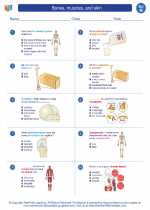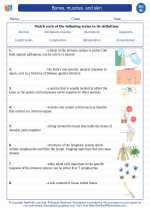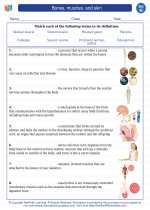Types of Conservation
- Environmental Conservation: This involves protecting and preserving the natural environment, including ecosystems, species, and habitats.
- Energy Conservation: This focuses on reducing energy consumption and promoting the use of renewable energy sources to minimize environmental impact.
- Water Conservation: This includes efforts to reduce water wastage, improve water quality, and protect water ecosystems.
- Wildlife Conservation: This involves the protection of endangered species and their habitats through habitat preservation and anti-poaching measures.
- Forestry Conservation: This aims to sustainably manage forests, promote reforestation, and prevent deforestation to maintain ecological balance.
- Soil Conservation: This focuses on preventing soil erosion, maintaining soil fertility, and promoting sustainable agricultural practices.
Importance of Conservation
- Preserves biodiversity and ecosystems
- Ensures sustainable resource availability
- Reduces environmental degradation and pollution
- Mitigates climate change impacts
- Supports sustainable economic development
Conservation Practices
- Reduce, Reuse, Recycle: Minimize waste and promote resource efficiency
- Support Renewable Energy: Promote the use of solar, wind, and hydroelectric power
- Protect Habitats: Preserve natural areas and create wildlife sanctuaries
- Conserve Water: Use water-saving technologies and practices
- Practice Sustainable Agriculture: Adopt methods that minimize soil degradation and chemical use
- Advocate for Conservation Policies: Support legislation and initiatives that promote conservation efforts
Challenges in Conservation
- Human Population Growth
- Industrialization and Urbanization
- Climate Change
- Resource Exploitation
- Political and Economic Factors
◂Science Worksheets and Study Guides Eighth Grade. Bones, muscles, and skin
Study Guide Bones, muscles, and skin
Bones, muscles, and skin  Worksheet/Answer key
Worksheet/Answer key Bones, muscles, and skin
Bones, muscles, and skin  Worksheet/Answer key
Worksheet/Answer key Bones, muscles, and skin
Bones, muscles, and skin  Worksheet/Answer key
Worksheet/Answer key Bones, muscles, and skin
Bones, muscles, and skin  Vocabulary/Answer key
Vocabulary/Answer key Bones, muscles, and skin
Bones, muscles, and skin  Vocabulary/Answer key
Vocabulary/Answer key Bones, muscles, and skin
Bones, muscles, and skin  Vocabulary/Answer key
Vocabulary/Answer key Bones, muscles, and skin
Bones, muscles, and skin  Vocabulary/Answer key
Vocabulary/Answer key Bones, muscles, and skin
Bones, muscles, and skin  Vocabulary/Answer key
Vocabulary/Answer key Bones, muscles, and skin
Bones, muscles, and skin  Vocabulary/Answer key
Vocabulary/Answer key Bones, muscles, and skin
Bones, muscles, and skin  Vocabulary/Answer key
Vocabulary/Answer key Bones, muscles, and skin
Bones, muscles, and skin 

 Worksheet/Answer key
Worksheet/Answer key
 Worksheet/Answer key
Worksheet/Answer key
 Worksheet/Answer key
Worksheet/Answer key
 Vocabulary/Answer key
Vocabulary/Answer key
 Vocabulary/Answer key
Vocabulary/Answer key
 Vocabulary/Answer key
Vocabulary/Answer key
 Vocabulary/Answer key
Vocabulary/Answer key
 Vocabulary/Answer key
Vocabulary/Answer key
 Vocabulary/Answer key
Vocabulary/Answer key
 Vocabulary/Answer key
Vocabulary/Answer key
